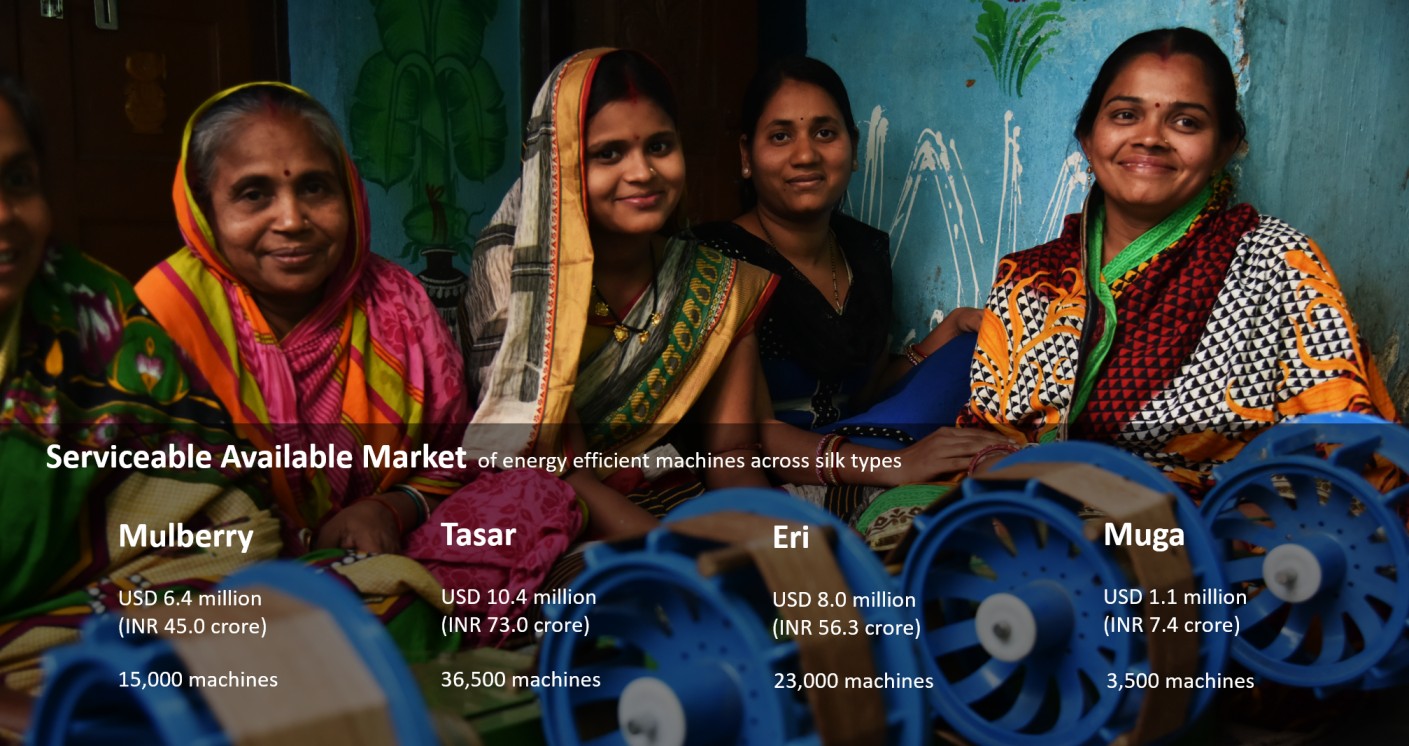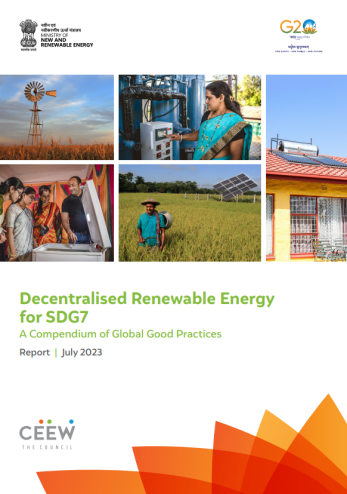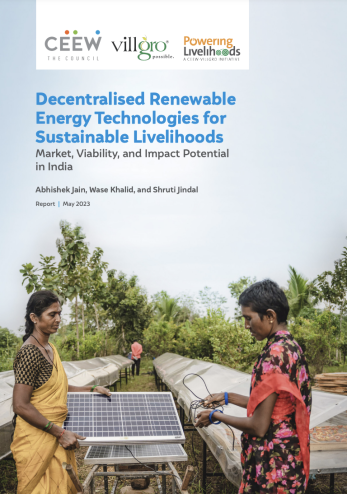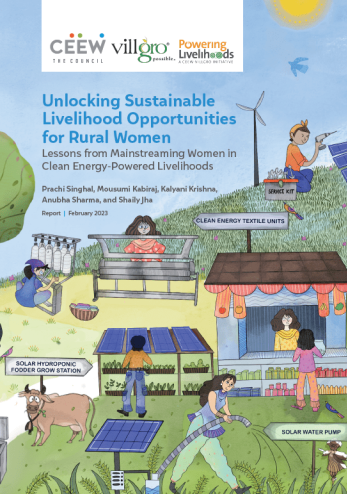Report
Energy-Efficient Silk Spinning and Reeling Machines: How Big is the Opportunity?
Garvit Sahdev, Shruti Jindal, Abhishek Jain
October 2021 | Sustainable Livelihoods
Suggested citation: Sahdev, Garvit, Shruti Jindal and Abhishek Jain. 2021. Energy-Efficient Silk Spinning and Reeling Machines: How Big is the Opportunity? New Delhi: Council on Energy, Environment and Water.
Overview
This Powering Livelihoods market research report provides insights on the current state of silk yarn production and the potential for energy-efficient silk spinning and reeling machines. The usage of energy-efficient machines allows reelers and spinners to have higher production by mechanising the manual operations and prolonging usage even in areas with no or erratic electricity. The report highlights supporting policy landscape, competition and key geographies suitable for machine installations across silk types like mulberry, tasar, eri, muga. It captures the serviceable market size and target geographies that entrepreneurs can target for selling produced yarn.
Powering Livelihoods, a USD 3 million (INR 21 crores) initiative by CEEW and Villgro, is mainstreaming clean energy-based solutions in India’s rural economy. It provides capital, technical, and sectoral growth support to help social enterprises deploy a large number of clean energy-based livelihood solutions in a gender-inclusive manner.
Key Highlights
- The total addressable market (TAM) for energy-efficient silk spinning and reeling machines is USD 51.1 million (INR 357.6 crore). Realising this opportunity could lead to the deployment of as many as 145,500 machines. The serviceable addressable market (SAM) for these products is USD 25.9 million (INR 181.8 crore); 78,000 machines.

- The serviceable available market will impact ~81,500 livelihoods (~86.5 per cent women) improving incomes and reducing drudgery.
- Assam is one of the top producers of muga, eri and tasar silk fabric, while Andhra Pradesh and Tamil Nadu are leaders in mulberry silk fabric production. Unincorporated silk weaving enterprises are concentrated in Uttar Pradesh, Andhra Pradesh and Tamil Nadu. Silk yarn producers can sell to these silk weaving clusters.
- The competitors of energy-efficient machines include traditional machines (charkhas and taklis) or practices (such as thigh reeling), small modern machines designed by CSTRI and local manufacturers and large multi-end machines. Entrepreneurs should tap into retail and distribution channels of traditional machine manufacturers, keeping in mind that clean solar energy can be a differentiating factor in regions with erratic electricity supply. Also, the existence of multiple operation modes in energy-efficient machines (such as manual, electric and solar-powered) enhances ease of operation.
The total serviceable market for energy-efficient silk spinning and reeling machines is USD 25.9 million (INR 181.8 crore). It could support the deployment of more than 78,000 machines and impact ~81,500 livelihoods (~86.5 per cent women) by improving incomes and reducing drudgery.







